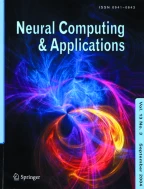Abstract
This paper aims to predict the landing state during the landing phase to ensure landing safety and reduce the accidents loss. Some past researches have demonstrated the landing phase is the most dangerous phase in flight cycle and fatal accident. The landing safety problem has become a hot research problem in safety field. This study concentrates more on the prediction and advanced warning for landing safety. Firstly, four landing states are divided by three flight parameter variables including touchdown, vertical acceleration and distance to go; subsequently, pattern recognition based on BP neural network is used to establish the landing state prediction model; the genetic algorithm is used to initialize the model parameter; the Markov chain is proposed to revise and improve the model for higher prediction precision. Finally, in comparison with pattern recognition and the Markov chain revision results, the Markov chain revision method is demonstrated to be practical and effective.
Similar content being viewed by others
Explore related subjects
Discover the latest articles, news and stories from top researchers in related subjects.References
Witte L, Roll R, Biele J, Ulamec S, Jurado E (2016) Rosetta lander philae—landing performance and touchdown safety assessment. Acta Astronaut 125:149–160
Yi L, Zhang S, Xueqing LI (2012) A hazard analysis-based approach to improve the landing safety of a BWB remotely piloted vehicle. Chin J Aeronaut 25(6):846–853 (in chinese)
Wang L, Wu C, Sun R (2014) An analysis of flight quick access recorder (QAR) data and its applications in preventing landing incidents. Reliab Eng Syst Saf 127:86–96
Sun YG, Sun L (2014) The design of avionics system interfaces emulation and verification platform based on QAR data. Appl Mech Mater 668–669:879–883
Chang RC, Tan S (2012) Post flight analysis based on QAR in FOQA program for jet transport aircraft part I: angular position monitoring of flight control surface. J Aeronaut Astronaut Aviat 44(1):9–16
Mejias L, Eng P (2013) Controlled emergency landing of an unpowered unmanned aerial system. J Intell Robot Syst Theory Appl 70(1–4):421–435
Qiao Y, Hui Y, Dong T (2012) Research on QAR data mining method based on improved association rule. Phys Proc 24(Part B):1514–1519
Dai Y, Tian J, Rong H (2015) Hybrid safety analysis method based on SVM and RST: an application to carrier landing of aircraft. Saf Sci 80:56–65
Alfaro-Ponce M, Argüelles A, Chairez I (2016) Pattern recognition for electroencephalographic signals based on continuous neural networks. Neural Netw Off J Int Neural Netw Soc 79(C):88–96
Bonakdari H, Zaji AH (2016) Open channel junction velocity prediction by using a hybrid self-neuron adjustable artificial neural network. Flow Meas Instrum 49:46–51
Afrand M, Nadooshan AA, Hassani M (2016) Predicting the viscosity of multi-walled carbon nanotubes/water nanofluid by developing an optimal artificial neural network based on experimental data. Int Commun Heat Mass Transf 77:49–53
Jing X, Wang Z, Tan C, Si L, Liu X (2015) A cutting pattern recognition method for shearers based on improved ensemble empirical mode decomposition and a probabilistic neural network. Sensors 15(11):27721–27737
Wang G, Shi P, Messenger P (2009) Representation of uncertain multichannel digital signal spaces and study of pattern recognition based on metrics and difference values on fuzzy n-cell number spaces. IEEE Trans Fuzzy Syst 17(2):421–439
Liu YM, Zhang S (2014) Dynamic process of quality abnormal pattern recognition based on PCA-SVM. Adv Mater Res 860–863:2686–2689
Bortolussi L, Milios D, Sanguinetti G (2016) Smoothed model checking for uncertain continuous-time Markov chains. Inf Comput 247:235–253
Ching J, Wang JS (2016) Application of the transitional Markov chain Monte Carlo algorithm to probabilistic site characterization. Eng Geol 203:151–167
Champion C, Houghton SM (2016) Application of continuous state hidden Markov models to a classical problem in speech recognition. Comput Speech Lang 36:347–364
Zheng Y, Wang S, Feng J (2016) A modified quantized kernel least mean square algorithm for prediction of chaotic time series. Digit Signal Process 48(C):130–136
Alsina EF, Bortolini M, Gamberi M (2016) Artificial neural network optimisation for monthly average daily global solar radiation prediction. Energy Convers Manag 120:320–329
Xiao Y, Zhang R, Zhao Q, Kaku I, Xu Y (2014) A variable neighborhood search with an effective local search for uncapacitated multilevel lot-sizing problems. Eur J Oper Res 235(1):102–114
Jia F, Lei Y, Lin J, Zhou X, Lu N (2016) Deep neural networks: a promising tool for fault characteristic mining and intelligent diagnosis of rotating machinery with massive data. Mech Syst Signal Process 72–73:303–315
Pawlak J, Hercman H (2016) Numerical correlation of speleothem stable isotope records using a genetic algorithm. Quat Geochronol 33:1–12
Zhang R, Kaku I, Xiao Y (2012) Model and heuristic algorithm of the joint replenishment problem with complete backordering and correlated demand. Int J Prod Econ 139(1):33–41
Zhao Y, Fatehi A, Huang B (2017) A data-driven hybrid ARX and Markov chain modeling approach to process identification with time-varying time delays. IEEE Trans Ind Electron 64(5):4226–4236
Brice O, Fabien S, Delphine MB (2015) The precision–recall curve overcame the optimism of the receiver operating characteristic curve in rare diseases. J Clin Epidemiol 68(8):855–859
Acknowledgement
This work is supported by the National Natural Science Foundation of China (Grant Nos. 71271009 & 71501007 & 71672006). The study is also sponsored by the Aviation Science Foundation of China (2017ZG51081), the Technical Research Foundation (JSZL2016601A004) and the Graduate Student Education & Development Foundation of Beihang University.
Author information
Authors and Affiliations
Corresponding author
Ethics declarations
Conflict of interest
The authors declare no conflict of interest.
Rights and permissions
About this article
Cite this article
Zhou, S., Zhou, Y., Xu, Z. et al. The landing safety prediction model by integrating pattern recognition and Markov chain with flight data. Neural Comput & Applic 31 (Suppl 1), 147–159 (2019). https://doi.org/10.1007/s00521-018-3669-9
Received:
Accepted:
Published:
Issue Date:
DOI: https://doi.org/10.1007/s00521-018-3669-9
